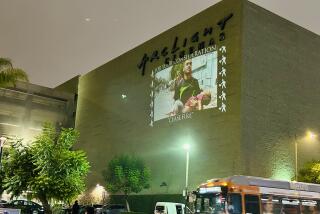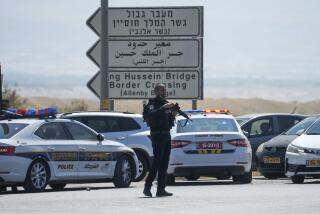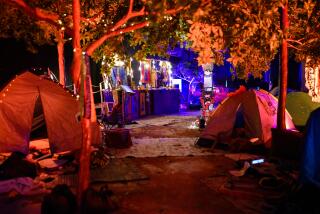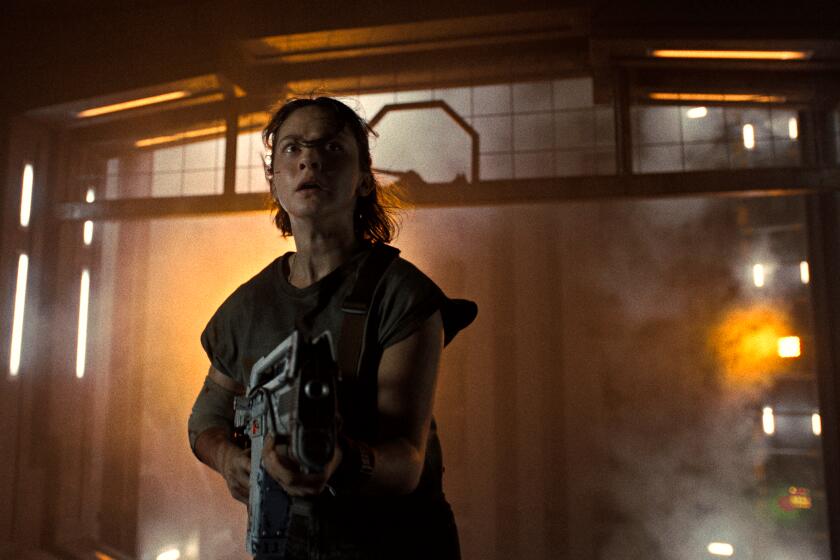‘Jerusalem 3D’ zooms in on power of ancient city with Imax intensity
The producer of “Jerusalem 3D,” the Imax documentary on the sacred Middle Eastern city, wasn’t interested in making a political film.
“I think there are so many great films and books about the conflict between the Israelis and the Palestinians, not to mention the nightly news,” Taran Davies said. “What I was personally interested in was to look behind that a little bit and try to understand, without judgment, why Jews, Muslims and Christians love Jerusalem so much.”
And why this ancient city on a mountainous plateau between the Mediterranean and Dead seas — the subject of more than 100 wars and dozens of conquests, and a place that has been completely destroyed twice, Davies said — “is still beloved by half of the world’s population.”
“What is the power of this place?” he asked.
Imax “has never been used to explore this particular subject,” he said. “There is really something about the Imax medium which is sort of a wide-eyed look at the world.”
Although some Imax documentaries have been rooted in nature or space, “Jerusalem 3D” is a hybrid of travelogue, cultural immersion, and social and religious history. Davies said filmmakers wanted to look at the beauty of Jerusalem, which is central to three religions, as well as to celebrate this part of the cornerstone of Western civilization.
The walls and most gates of Jerusalem’s Old City were built by the Turkish Sultan Suleiman the Magnificent in the 16th century. The area consists of four quarters: Armenian, Jewish, Muslim and Christian. About 40,000 live in the Old City, and more than 700,000 live in neighborhoods outside the walls.
Much of that gets explored in National Geographic Entertainment’s award-winning “Jerusalem 3D,” which opens in Los Angeles on March 10 at the California Science Center in conjunction with a new Dead Sea Scrolls exhibit. (The largest mounted outside of Israel, the exhibit features 600 ancient artifacts including the oldest known copies of the Hebrew Bible, or Old Testament.) Narrated by Benedict Cumberbatch, the film already was released in about 30 Imax theaters across the U.S. as well as in some 60 international markets.
For the Record, March 10, 10:20 a.m.: An earlier version of this story indicated that “Jerusalem 3D” opened on Friday. It opens on Tuesday, March 10.
“We always try to line up a good Imax film with a good special exhibit to enhance the experience for our visitors,” said Diane Perlov, the California Science Center’s deputy director of exhibits. “It’s a really good complement because it provides the historical and cultural context for the exhibit. “
The story of Jerusalem is seen through the eyes of three teenage girls — one Christian, one Jewish and one Muslim — and their families. Archaeologist Jodi Magness guides viewers through the rich history of the city. The 45-minute documentary also visits such religious sites as the Western Wall, the Dome of the Rock and the Church of the Holy Sepulcher.
Shot over three years, producer Davies said, “Jerusalem 3D” is a film “that shouldn’t have happened by all accounts. In the land of miracles, it was a miracle.”
Writer-director Daniel Ferguson called it “an epic production.”
“I was initially terrified of cramming 5,000 years of human attachment to this place in 45 minutes, and, obviously, the political minefield of this place,” Ferguson said. “It was sheer folly. I made my first trip in 2009. I made 14 trips, and 11 of those were just to get permission and gain trust. I ended up being enamored of the city.”
Davies noted that Jerusalem “isn’t a museum city. It is a living, breathing city with rituals that have been going on for thousands of years and still is ongoing.”
In Imax 3-D, the Old City and surrounding environs come to vivid life thanks to expansive aerial footage and scenes that invite audiences to witness the ceremony of the Holy Fire, which has taken place on Holy Saturday in the Church of the Holy Sepulcher since the fourth century. The film also explores the Hurva synagogue and the Garden of Gethsemane on the Mount of Olives.
“One of our greatest shots of the film is this moment we have this procession of monks over a crest of one of the hills leading into Jerusalem,” Davies said.
It wasn’t easy to get the aerial shots.
“The Old City of Jerusalem has had a no-fly zone over the last 20 years,” Davies said. “To film in Imax, you have to get as close as possible. But for good and obvious reasons, no one wants a big helicopter with a massive nose mount.”
Davies and Ferguson persuaded “everyone from the mayor of Jerusalem to the army to the leaders of the Islamic council,” Davies said. “ We met with distrust at every level. Everyone thought we must have some agenda. We persevered.”
One of the most challenging places to film was inside the Church of the Holy Sepulcher.
“Basically to change a light bulb can take years,” Davies said. “We ended up getting permission to have our 50-person Imax crew locked in overnight because every night, for hundreds of years, the church doors are locked. We were able to film this extraordinary cathedral over the course of the night.”
Ferguson got knocked on the ground by the police while filming the ceremony of the Holy Fire.
“As far as they were concerned I was some overzealous journalist,” he said, adding, “There are hundreds and hundreds of people packed in there.”
Ferguson came up with the idea of telling the story of “Jerusalem” from multiple perspectives “because that’s what I started to see in Jerusalem,” he said. “There was no such thing as objective history — the idea that each stone could have 100 stories depending on who you asked. I started to think about who the storytellers were going to be and we decided to cast young people. “
Casting took a year.
“We fell in love with this idea of telling the story from a female perspective,” Ferguson said.
The three teenage girls, Davies said, “live in really very separate worlds.”
“What is the most interesting take-away of this film is that even though those girls live so close to each other, when we would ask them to tell their stories of Jerusalem, they were absolutely different.” They learned one another’s stories, Davies said, “by watching and coming together to promote the film.”
More to Read
Only good movies
Get the Indie Focus newsletter, Mark Olsen's weekly guide to the world of cinema.
You may occasionally receive promotional content from the Los Angeles Times.











